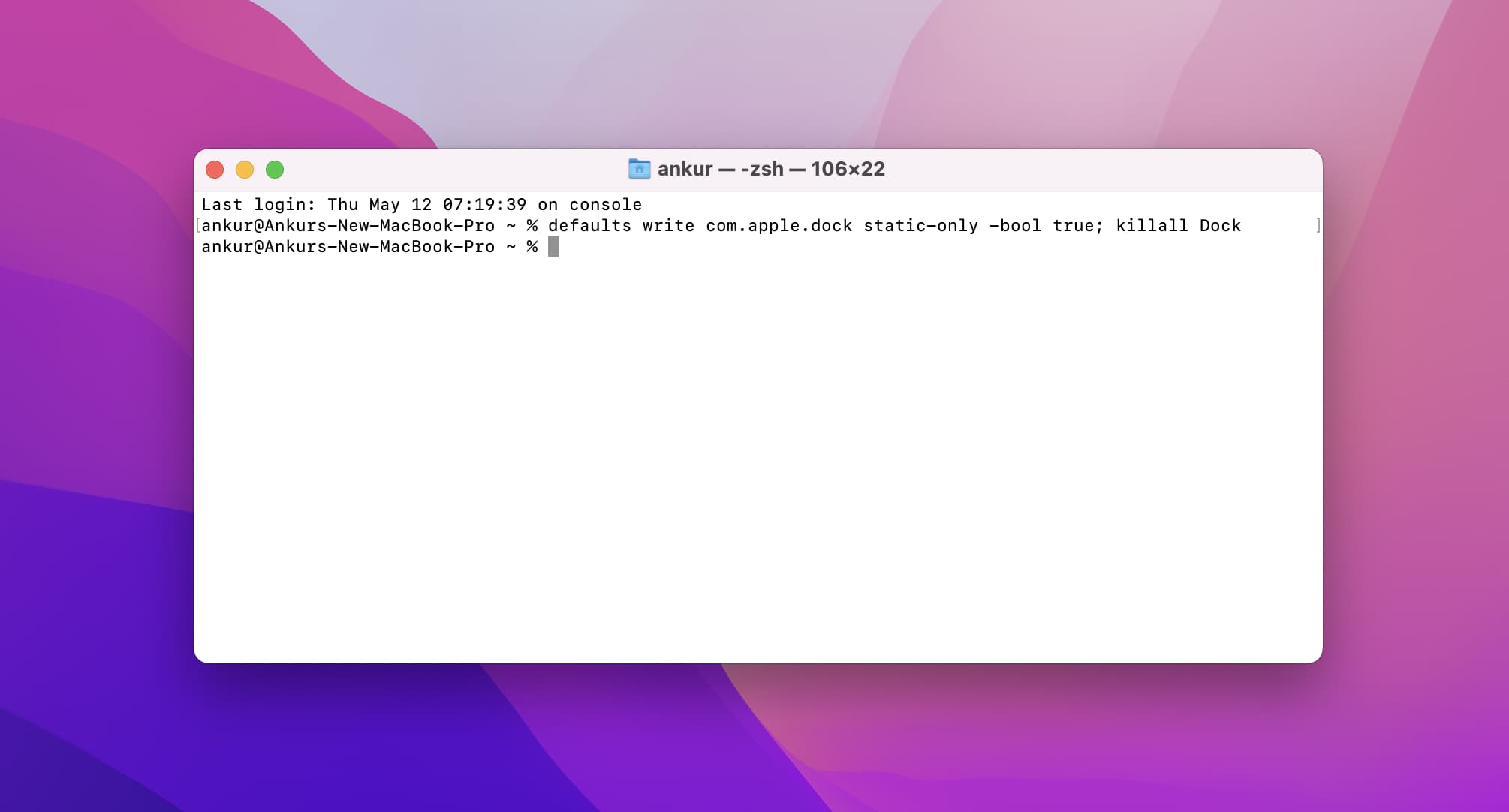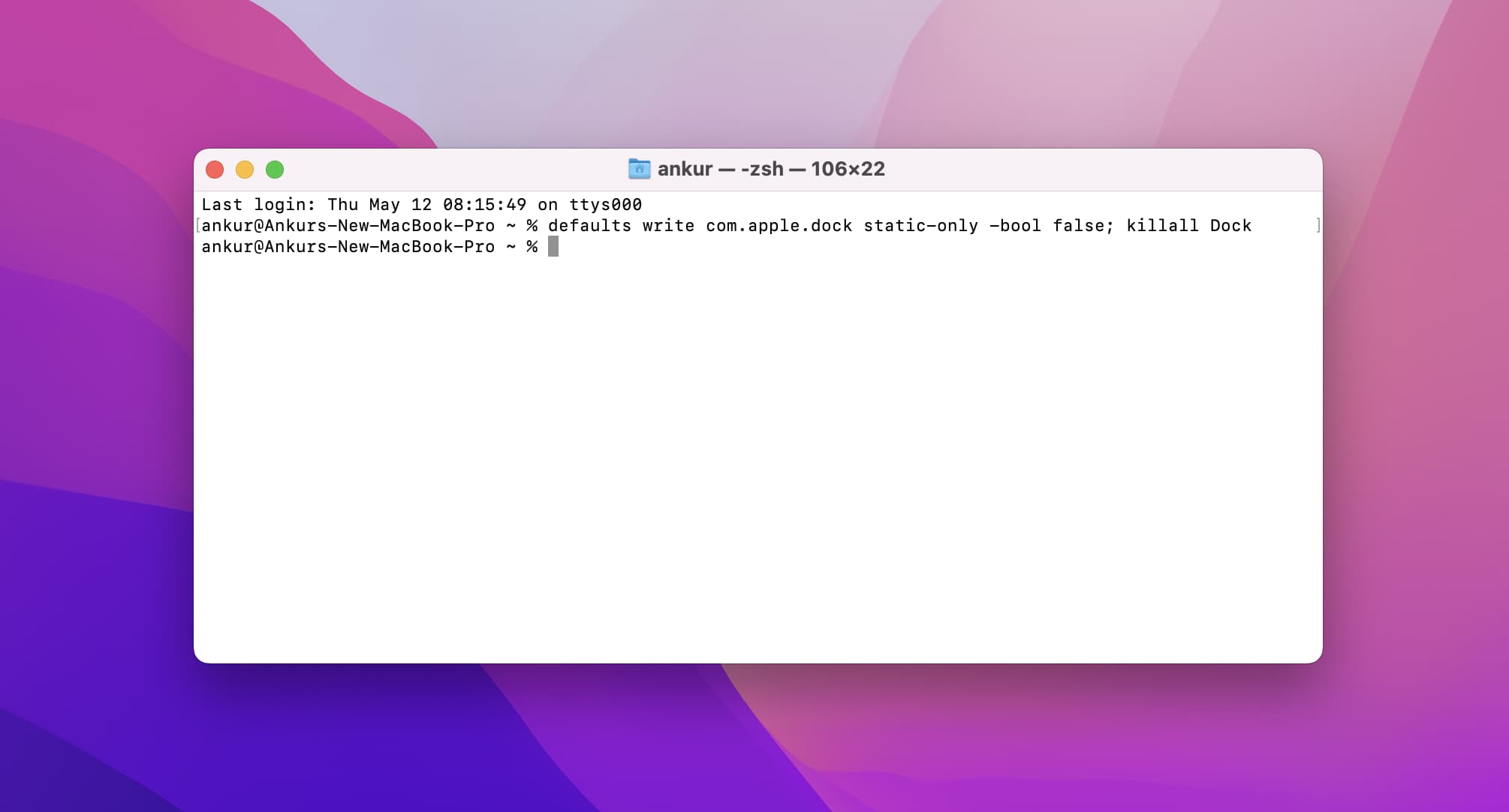In this quick tutorial, we’ll show you how you can set up your Mac’s Dock to show only open and active apps to reduce clutter.

Unless you are a new Mac user, chances are you have already customized your Mac’s Dock with applications you use daily. However, if you feel that your Dock is cluttered and takes up too much space, you can customize it from System Settings to decrease its size. Alternatively, you can even set your Mac’s Dock only to show open, running apps!
Getting your Mac Dock to show only running apps will significantly tidy it up. And whenever you restart your Mac, you will be greeted with a tiny Dock that just has the Finder and Trash icons.
Tip: Before you begin, I recommend taking a screenshot of your Mac’s Dock. This screenshot will serve as a helpful reference if you ever want to add the apps again to get back your old Dock.
Show only open, active, and running apps on your Mac Dock
- Open Terminal from the Launchpad or Applications folder.
- Type or copy & paste the following command into Terminal and hit the enter/return key.
defaults write com.apple.dock static-only -bool true; killall Dock

Your Mac’s Dock will refresh, and now it will only show the currently running apps. The rest of the apps will be removed automatically from the Dock.
Note: Open applications show a dot below their icon in the Dock (System Settings > Desktop & Dock > Show indicators for open applications).
Finder is always running on your Mac, so that icon will stay on the Dock. And Trash is an essential component of your Mac, so that will stay as well. All other new apps you launch on your Mac from the Launchpad, Applications folder, etc., will show in the Dock as you’d expect.
However, if you quit an open app, its icon may continue to stay on the Dock. That’s because your Mac’s Dock needs to be killed or refreshed for some changes to reflect. So, to get rid of once-open-but-now-closed apps from the Dock, launch Terminal, type killall Dock, and hit the enter key. This will refresh the Dock and reflect the latest changes (that is, it will remove the closed app icons and only show the apps currently open). Alternatively, when you restart your Mac, that too refreshes the Dock, and it will no longer show the apps that aren’t open.
Further, even with the above customization of only showing open apps, you can drag apps next to the Finder icon and keep it on the Dock until the next killall Dock refresh or restart.
Make the Dock normal again
You can easily revert the change if you find that removing non-active apps from the Dock makes it harder to launch apps and hinders your productivity.
- Open Terminal.
- Type or copy & paste the following command and hit the enter/return key.
defaults write com.apple.dock static-only -bool false; killall Dock

This will now prevent your Mac’s Dock from only showing open and active apps. In an ideal situation, it should revert your old Dock with the added apps. But I tested it several times on the latest version of macOS Monterey, and it doesn’t restore the Dock’s previous setup. So, you will have to manually add the apps to the Dock. See the old Dock’s screenshot if you took one.
Restart your computer in case your Mac’s Dock does not go back to normal and you cannot drag and add apps to it. If even restarting does not work (as was my case on macOS Sequoia), you will have to reset your Mac’s Dock to factory settings, and then you can customize it again.
Extra info: Like me, if you use a 13-inch MacBook, making the Dock automatically hide & show, reducing its size, adding only a few most essential apps, or showing only open apps are some handy tips to ensure a larger window area for all open apps like Chrome, Pages, etc.
More tips about using the Dock: